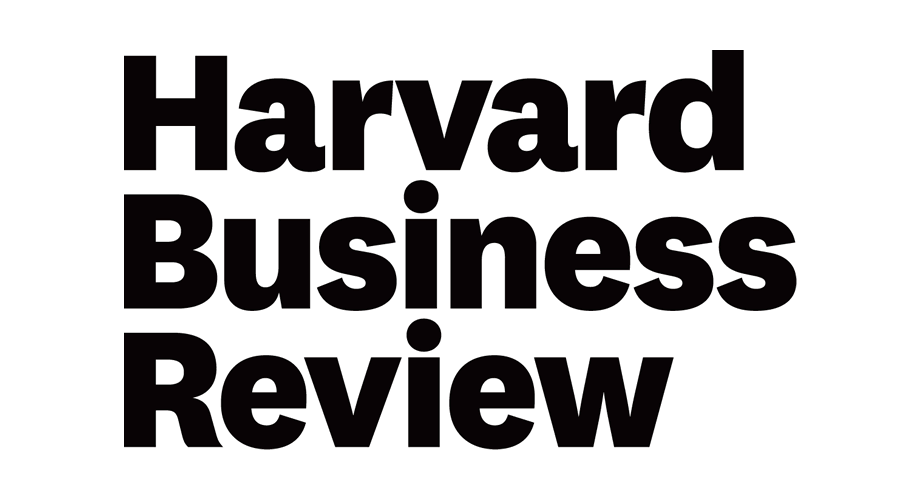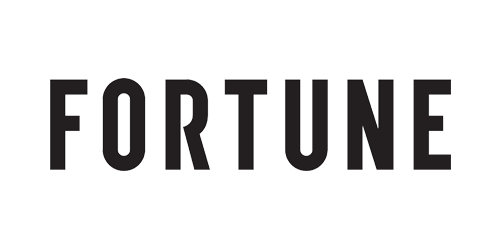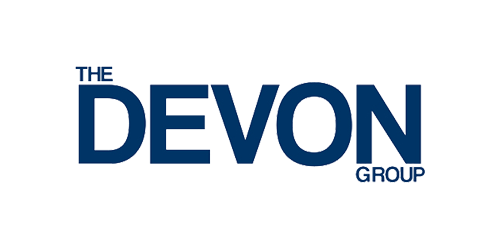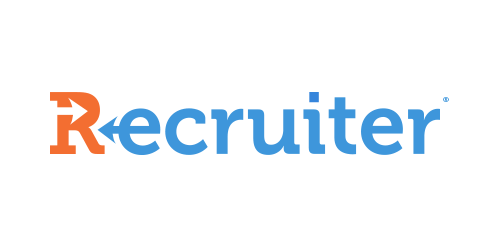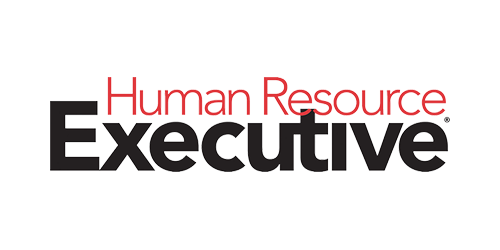Why Employees Quit

Skizzomat
New research points to some surprising answers.
by Ethan Bernstein, Michael B. Horn and Bob Moesta of Harvard Business Review
Summary: The so-called war for talent is still raging. But in that fight, employers continue to rely on the same hiring and retention strategies they’ve been using for decades. Why? Because they’ve been so focused on challenges such as poaching by industry rivals, competing in tight labor markets, and responding to relentless cost-cutting pressures that they haven’t addressed a more fundamental problem: the widespread failure to provide sustainable work experiences. To stick around and give their best, people need meaningful work, managers and colleagues who value and trust them, and opportunities to advance in their careers, the authors say. By supporting employees in their individual quests for progress while also meeting the organization’s needs, managers can create employee experiences that are mutually beneficial and sustaining.
The so-called war for talent is still raging. But in that fight employers continue to rely on the same hiring and retention strategies they’ve been using for decades, even though those approaches aren’t working: People may be enticed to stay a bit longer than they otherwise would have, but they still leave. So why do organizations persist with those strategies? Because they’ve been so focused on challenges such as tight labor markets, relentless cost-cutting pressures, and poaching by industry rivals that they haven’t addressed a more fundamental problem: the widespread failure to provide gratifying work experiences. To stick around and keep giving their best, people need meaningful work; managers and colleagues who value, respect, and trust them; and opportunities to grow, excel, and advance in their careers.
Although managers and their HR colleagues are beginning to understand that employee experience matters for hiring and retention, they haven’t reached anything close to a consensus on what it should look like or how to provide it. Some workplaces invest heavily in wellness benefits and initiatives, with mixed results. Others try (and in many cases struggle) to create effective mentoring or learning and development programs—worthy endeavors but tough to get right if you haven’t identified what employees want from them.
It’s time to step way back from these related but typically uncoordinated efforts so that managers can see and address the larger issue of experience. Over the past 15 years we’ve collectively studied the behavioral patterns of more than a thousand job switchers at all levels and career stages—a racially diverse sample representing a wide range of roles and professions. In interviews, surveys, classroom discussions, consulting engagements, and coaching sessions, we’ve found again and again that employees who quit their jobs do so because they aren’t making the progress they seek in their careers and lives.
By supporting people in their personal quests for progress—in ways that meet the organization’s needs—managers can, our research suggests, create employee experiences that are mutually beneficial. In our qualitative dataset we found that career moves were driven primarily by four quests. We’ll describe them here and discuss how managers can help employees on their journeys. But first let’s take a closer look at the stakes for employers.
Attrition Is a Persistent, Costly Problem
Leaders can’t reasonably blame their human capital troubles on the economic or competitive challenges of the day. Long before the Covid-19 pandemic, which saw the highest quit rates in U.S. history, employers complained that talented people were walking out the door with their knowledge, skills, and relationships. Those departures are expensive. Studies estimate that on average, the cost of losing an employee ranges from six to nine months’ worth of that person’s compensation. For technical and executive positions it can be as high as twice the employee’s annual salary.
Despite copious employee surveys, pulse checks, and exit interviews, companies usually don’t get to the bottom of why people quit. Departing employees may keep their reasons for leaving to themselves—out of fear that they’ll burn bridges, for example, or out of a sense of futility. And we’ve often found in our coaching sessions that people aren’t even clear themselves about their reasons for career moves until they sit down with a trusted coach, mentor, or friend who can help them understand what’s really driving them. Most people don’t do that. Instead they respond to job postings that grab their attention and switch jobs when they get a decent offer, hoping that things will improve—only to be dissatisfied down the line. Some switch again and again; many never find quite what they need.
The Forces That Compel Job Moves
The act of quitting (quiet or otherwise) is different for each person and driven by a variety of forces. Trying to retain employees without understanding what motivates them as individuals is like grabbing a flathead screwdriver out of your toolbox before checking whether the screw that needs attention is a Phillips head.
To make it easier for people to realize what led them to make a particular career move, we have identified the most common functional, social, and emotional forces that compel action (see the sidebar “The Push and Pull of a Job Switch”). In our research we explored a range of questions: What problems with a job’s basic functions—assignments, projects, activities, tasks, and so on—can fuel a desire for change? To what extent can employees’ met or unmet social needs drive career moves? How can employees’ emotional needs—to feel energized, for example, rather than depleted—affect their willingness to trade in the familiar for the unknown?
In our conversations with job switchers, we heard that negative experiences (doing work that feels empty, for example, or disliking one’s colleagues), along with changing life circumstances (such as moving or having kids), pushed individuals away from their old roles. The potential for positive experiences elsewhere pulled them toward something new. Those forces work together. Our findings square with research by the Wharton economist Katy Milkman, which shows that behavioral pushes become stronger when a new idea or solution pulls people toward something they aspire to. For example, a salesperson in our sample who felt micromanaged in his job stayed put until he was enticed by an offer that would allow him to take control over all aspects of the sales cycle.
To gather detailed information about prevalent pushes and pulls, we interviewed people not about their current circumstances—which might or might not prompt a career move—but about their most recent job switch.
Four Quests for Progress
Although pushes and pulls can work together in all sorts of ways, depending on life circumstances, we have found that they tend to cluster into four main quests. People who change jobs do so because they want to get out of their current situation, regain control of their work or lives, regain alignment between their work and their knowledge and capabilities, or take the next step in their careers. Job seekers often relate to more than one quest, but at any given time one takes priority over the others. (Our assessment at www.jobmoves.com can help the people you manage or mentor identify which quest they were on when they last left a job.)
Our research is rooted in the idea that just as customers “hire” products to do certain jobs for them, people can “hire” their next role to help them make the progress they want. Here we’re drawing on the jobs to be done theory, which one of us (Bob) codeveloped with the innovation scholar Clayton Christensen to explain how makers of products can understand what customers hope to accomplish in a given circumstance (see “Know Your Customers’ ‘Jobs to Be Done,’” HBR, September 2016). Our interviews with job switchers uncovered the jobs to be done in their lives, which we call their quests for progress.
The quests have little to do with career progression as it’s traditionally defined—a steady, linear ascent from junior to senior employee. Rather, progress zigzags according to what the individual wants most out of work and life at a particular time.
Let’s look at each quest.
Get out. People who experience a classic fight-or-flight response are often being managed in a way that wears them down. They may feel stuck in a dead-end job or be in over their heads. Many face steep obstacles (such as a toxic culture, a role that’s a bad fit, or an awful commute) that prevent them from putting their capabilities to good use. For whatever reason, they’re strongly at odds with their work environment. They want a new job to rescue them from their current one.
Regain control. It’s common for people to feel overwhelmed (or bored) at work, at home, or both. Some need a rebalance. Others simply want more predictability or flexibility in when and where they work. Unlike employees desperate to get out, control seekers aren’t searching for the nearest escape hatch. They usually feel pretty good about their overall trajectory but not so good about the speed at which they are moving. They tend to hold off on switching until they find a job that will give them agency over their work environment.
Regain alignment. Most people seeking alignment feel a profound lack of respect at work and are hunting for a job where their skills and experience will be more fully utilized, appreciated, and acknowledged. Lacking such validation, they often have a dark outlook and fixate on the many ways their current role doesn’t play to what they have to offer or what they wish to contribute. In their search for something new, they typically gravitate toward an environment where they believe they won’t be underestimated or misunderstood.
Take the next step. After reaching a personal or professional milestone—such as completing schooling, achieving a development goal, or becoming empty nesters—job switchers are often eager to move forward in their careers. In many cases that means taking on more responsibility. Often driven by a desire to support themselves or their families, these individuals might want better healthcare benefits, a more comfortable living environment, the ability to pay for everyday basics or save for college, and so on. People on this quest—unlike those in the other three categories—aren’t necessarily reacting to a bad situation. They’re pursuing growth, so they may be willing to leap into a stretch role.
Departing employees may keep their reasons for leaving to themselves—out of fear that they’ll burn bridges, for example, or out of a sense of futility.
Armed with this knowledge about quests for progress and the forces behind them, you can work with your employees to tailor their experiences and even their roles to help them achieve the progress they seek. We recommend doing so in three ways: (1) Interview people long before they head for the exit. (2) Develop “shadow” job descriptions that speak to their—and your—real needs. (3) Huddle with HR to help employees make the progress they desire.
Interview Them Early On
As we noted earlier, exit interviews can be a bit of a joke. People usually assume it’s too late to address why they are leaving—so they say safe things and move on.
We’ve found that it’s more productive to interview employees about their previous roles soon after they’ve started something new. That’s essentially what we did in our research. By closely examining the pushes and pulls that compelled each person’s most recent job move, you can better understand what might motivate your employees to make another change soon—and, conversely, what might make them choose to stick around. You can frame these talks with employees as your way of identifying important features of their experience so that with their input you can create a workplace that they’ll want to “rehire” each day. (See the sidebar “Why Did They Leave? An Interview Guide.”)
In our mentoring and advising work, we regularly conduct these interviews to help people recognize underlying forces they aren’t yet seeing on their own. To identify pushes and pulls, we suggest prodding for details, like an investigative journalist, while also approaching the conversation with empathy. Instead of weaving your assumptions into someone’s story, ask lots of granular questions. For instance: What was happening in your life when you first thought about switching jobs? What propelled you from passive to active looking? Throughout the job-switching process, what conversations did you have with people close to you? What worries and hopes did you discuss with them?
We like to allow two hours for interviews: one to ask questions and listen, and one to debrief after a quick break. Take good notes so that you can easily refer back to details that may later seem important.
During the debrief look together at common pushes and pulls and discuss which ones are most relevant to this employee’s latest job switch. Perhaps, for instance, the person was making too many sacrifices at home to get things done at work and didn’t see a clear path for growth at the old company. Maybe the employee was drawn to the new role by the freedom and flexibility it affords and a desire to be part of a tight-knit community.
Once you’ve helped people clarify why they’re here at your company, you can talk about what’s still important to them, what may have changed since they started the current job, and what new forces they may encounter given what’s going on in their lives now. If the path for growth in your organization is clear, great—but what’s next? Which skills does the employee want to invest in? How might those be developed on the job, to avoid sacrificing family time? If community still matters a great deal, what can be learned from colleagues—and what can be taught in return—to deepen work relationships? How might those opportunities be folded into team or project assignments?
In this way you can work together on a career plan that serves both the employee’s interests and those of the organization.
Joe Carver, who heads up leadership development at the Puget Sound Naval Shipyard, shows employees that he understands their past pushes by acting on the information they share with him. He told us that he often sits down with people to brainstorm ways of giving them more agency in how they do their work—and then incorporates those ideas when creating future assignments, development goals, and performance targets. He also examines the pulls that enticed individuals to join his team so that he can deliver—and keep delivering, for as long as possible—on what brought them there. He finds that when he can’t offer them more ways to continue growing, it’s far better to have an upfront conversation about what’s next for them than to delay their inevitable departure. That way employees don’t stall in their quests for progress, and his team doesn’t stagnate from a loss of energy and productivity.
Develop “Shadow” Job Descriptions
The job application process has become so standardized that most employers don’t question it. But it needs a serious rethink—especially if you’re trying to create a workplace that employees will want to rehire each day after they’ve joined the organization.
Perhaps the most fundamental problem to solve is the job description. It usually consists of a hodgepodge of skills, qualifications, and platitudes about work style and culture cribbed from past job descriptions, competitors’ postings, and requirements for title and pay grades. The whole thing is so broad as to be meaningless—and it’s often impossible (and unnecessary) to fill the role as described. No wonder prospective employees puff up their résumés to make themselves look like superheroes. People on both sides of the process—employers and candidates—know that these posts don’t reflect reality.
Perhaps the most fundamental problem to solve is the job description. It’s usually a hodgepodge of skills, qualifications, and platitudes so broad as to be meaningless.
The origin of the job description dates back more than a century. Observing factories in the industrial economy, Frederick Taylor (whose scientific management theory changed how work was organized and assessed) set out to measure the precise time it took to do various jobs and tasks. After that it was relatively simple to describe the work and its requirements in job postings. Employers kept these descriptions short because newspapers charged by the line to run them.
When job boards went online and charged one flat fee regardless of length, descriptions swelled. Postings quickly morphed into ridiculous wish lists of capabilities and credentials. Companies’ legal departments got involved in writing and approving—and further inflating—the language to give their organizations maximum leeway and protection in talent decisions. Maury Hanigan, the CEO of the job-marketing platform SparcStart, says that job descriptions have become “the basis against which an employee is evaluated and potentially fired.” Given that purpose, they work poorly as marketing documents and do little to ensure good matches between people and roles. Hanigan likens using them that way to “selling a house by posting the mortgage documents.” But it’s how things are done.
The litigiousness around employment decisions in our society means that’s unlikely to change anytime soon. So hiring managers must work around these vague, bloated descriptions to find the right people. Thus when you reach out to friends and industry contacts for leads and start interacting with candidates, you’ll need to create a “shadow” description that supplements the official one to clarify what the person you hire will actually do in the role. It can be useful to borrow concrete descriptions of activities and tasks from performance reviews of people who are already doing the job effectively.
It also helps to focus on the job’s experiences, not features. To illustrate what we mean by that, let’s return to the house-listing analogy. Like most job descriptions, real estate postings tend to focus on features, such as open kitchens, home offices, and finished basements. But those things matter only in the context of day-to-day experience: How will people use them when they cook, when they work at home, and when they entertain? That’s what the real estate agent helps them envision during a walk-through. You can take a similar approach when giving a private, informal “tour” of the job you’re trying to fill. Briefly describe a “day in the life,” and offer to chat so that you can provide more practical details. Without those extra layers of information, people will get lost in a hazy job description—or they’ll just keep scrolling for a more obvious fit.
Consider this disguised LinkedIn posting for a chief of staff role:
Serve as a key member of leadership team. Play critical role in developing, accelerating, and communicating agenda for executing vision. Be responsible for coordinating and advancing companywide priorities and projects. Duties include leading staff units in C-level office; developing and implementing key initiatives; managing special projects and crisis situations; collaborating with senior officers to advance priorities; involvement in comprehensive communications planning and stakeholder engagement; leading and partnering with key staffers and leaders on special projects, operational decisions, policy development, and communications planning.
After a few more vague sentences the description moves on to requirements:
Bachelor’s degree; at least 10 years of experience in publications or communications; excellent writing, editing, and project management skills; an appreciation for the distinctive culture and values of the organization; ability to strategize creatively and collaboratively; ability to make complex information comprehensible and compelling for a wide range of readers and to write effectively in many styles depending on audience, content, and platform. Proficiency with Microsoft Office, Drupal, social media platforms, and Adobe Creative Suite; initiative; and judgment and discretion when dealing with complex, confidential, and sensitive information.
Now suppose you’re trying to fill that role. Without more specifics about what it entails day-to-day, the requirements lack meaning. For example, what does “excellent writing” mean in this context? What is being written, and for what purposes? Who are these audiences that require “many styles”? People will have no idea if you don’t tell them. What’s meant by “crisis situations”? How will the chief of staff attend to them? What kinds of “companywide priorities and projects” will this new hire manage? What will that look like in practice?
Filling in such specifics allows people to see themselves in a role. If it’s simply not a good fit, they—and you—will recognize that sooner. If both sides are still interested, however, you can delve into how the day-to-day experiences might be tailored to the individual. To a strong candidate for a consulting role, for example, you might say, “Within six months we can get you a travel assignment in a region you want to learn more about.” Or “By the time you have a year’s experience, you’ll own some client relationships—and in the meantime, while you’re learning, I’ll bring you to half my client meetings.”
To prevent misunderstandings or broken promises later, especially given how easily managers can lose sight of informal arrangements in the heat of getting an organization’s work done, we suggest summarizing any agreements in written communications with candidates. You can document them more formally post-hire in performance-management goals, mentor- or sponsor-meeting templates, and so forth. By working with employees to incorporate the experiences they value most in their development materials, you can create clearer paths to those experiences and make good on your agreements. That’s a more meaningful way to keep people engaged than throwing them random “opportunities”—prizes that can feel good in the moment but may end up distracting them from what they really want at work.
By focusing on what someone will do (much as you would in a contract agreement for a gig worker) rather than describing what the person will be (in the example above, a chief of staff with a laundry list of skills), you can help job seekers gauge whether a role is compatible with the activities that bring them energy, the skills they want to invest in, and the trade-offs they’re willing to make in their lives. That level of specificity will also encourage them to represent themselves more accurately in their résumés and interviews. Both sides will get a clearer sense of fit. The new hire can hit the ground running, and you’ll have established shared expectations for development and performance—a foundation that you can build on together.
Huddle with HR
When we present our findings to chief human resources officers, they often wonder how they could persuade managers and employees to devote sufficient time and reflection to following our recommendations. That effort does take time—but probably less than you assume, especially if you and your HR team undertake it systematically, in combination with other HR processes.
First, work together to decide how to introduce employees to this new way of thinking about progress. For instance, during onboarding you might familiarize people with the concepts and how they fit into your organization’s talent processes. That will help when you sit down later to conduct interviews about their previous roles.
IDRsolutions, a software company in the United Kingdom, has added these conversations to its regular development and review practices. Employees are encouraged to talk about what motivates them and what might cause them to leave so that their personal goals can be better reflected in their job goals. The CEO, Mark Stephens, told us that this lets workers have concrete conversations about what’s blocking their progress and enables managers to “preempt people leaving for the wrong reasons because we failed to diagnose an issue early.”
Next, work with each employee and HR to design, modify, or find a role that amounts to real progress on both sides. All too often organizations cobble together roles to fit assumptions about what they “should” entail. Or a manager and HR combine whatever responsibilities they must to convince a compensation expert in the finance department that the resulting role can be “graded” at the title and pay level they want. When you understand the effect of pushes and pulls, you can make roles more malleable to better suit people you value. A straightforward way to do that is to transparently and collaboratively examine the tasks within a set of jobs, identify where they can be divided and reassigned cleanly, and mix and match them to create new roles that play to people’s strengths and desires.
Zappos, the online shoe and clothing retailer, provides an extreme example of flexible role design. In 2013 the company moved to Holacracy, a decentralized approach to organizing work, whereby employees make the rules, set goals and targets, and form and disband teams fluidly. On average, Zappos employees went from having one role before the transformation to having 7.4 specialized, modular, and often unrelated roles afterward. For example, the same person could simultaneously serve as a taxonomy architect on one project, a user experience designer on another, and a social media manager on a third. Roles rapidly changed to support new goals and initiatives. Slicing roles more thinly complicated things, such as keeping track of who did what and paying people fairly. But, our research shows, a key benefit was that employees could craft their own jobs within the scope of the organization’s strategic needs.
Few companies fully embrace a role-selection system like Holacracy, and some that try to do so end up abandoning it because it’s a huge commitment of energy to work on the organization while working within it. (Even Zappos has diverged from aspects of pure Holacracy. It eliminated the time-consuming system of employee self-governance while retaining the modular approach to roles.) But the more finely you can slice roles and tasks, the more opportunity you’ll have to design jobs that find the sweet spot between organizational needs and individual progress.
There are many ways to mix and match people and work. What your organization considers a “side gig” in relation to a particular role could become an employee’s main gig—and that’s OK, as long as all the work gets done well. People eager to branch out might be encouraged to experiment in other functions or business units with short-term assignments, project work, or even discrete experiences (such as attending a sales kickoff meeting or a strategy offsite) that match their definition of progress. Temporary “role slices” like these can be quite small—veritable slivers that provide exposure to new ideas, people, and ways of working. Or they can be bigger and longer-term, such as lateral moves within an internal job market where talent is deployed and developed across team or unit boundaries. A number of companies have created talent marketplaces to facilitate such internal mobility. (See “How to Design an Internal Talent Marketplace,” HBR, May–June 2023.) By making such opportunities possible, an employer can continue to reap returns on its talent investments while supporting employees in their individual quests.
When we shared these observations with a group of highly experienced HR professionals, a few asked politely, albeit critically: “Isn’t all this just repackaged ‘work on good job design,’ which dates back to the 1960s and 1970s?” Perhaps, but with this caveat: Technology has made it far easier today than it was back then to support individual job enrichment. We now have digital tools for collaboration, like Slack and Teams, so we can more easily see how people are faring in their interactions with colleagues and what kinds of roadblocks they encounter in their daily work. We have virtual learning tools. We have access to real-time data and analytics about employee behavior that shed light on engagement, productivity, learning, and even happiness. As career paths become less linear and roles become more disaggregated—into gigs, agile operating systems, and other channels for talent to flow smoothly from one kind of work to another—managers and their organizations will acquire even more tools to engage and develop people through work design, whether their efforts are viewed as job enrichment, job crafting, or simply helping employees make progress. As Cassie Soady, the chief people officer of GrainCorp, an Australian agribusiness, explained to us, an entire generation of people have seen technology deliver customized user experiences—and they expect customized employee experiences as well.
. . .
Our approach to career development works best when it involves both self-reflection and collective analysis. When all the thinking is left to the individual, the insights aren’t quite as rich, and the employer doesn’t benefit nearly as much from them.
If you’re feeling overloaded as a manager—and exhausted by employees who seem to crave constant feedback—our recommendations may sound like a lot of work. In a session with the top 500 leaders of a global financial services firm, one senior executive said she was tired of a generation who expected to be “massaged like Wagyu beef” in order to be retained. Fair enough.
But here’s the counterargument: The adage “Work smarter…not harder” applies. Too many retention and development efforts are one-offs—taxing for managers and less than fruitful for employees. By embedding quests for progress into your talent processes, you can systematically make more-targeted investments in people. That’s progress we all want to make.
This post is in partnership with Harvard Business Review. This article was originally published at hbr.org

